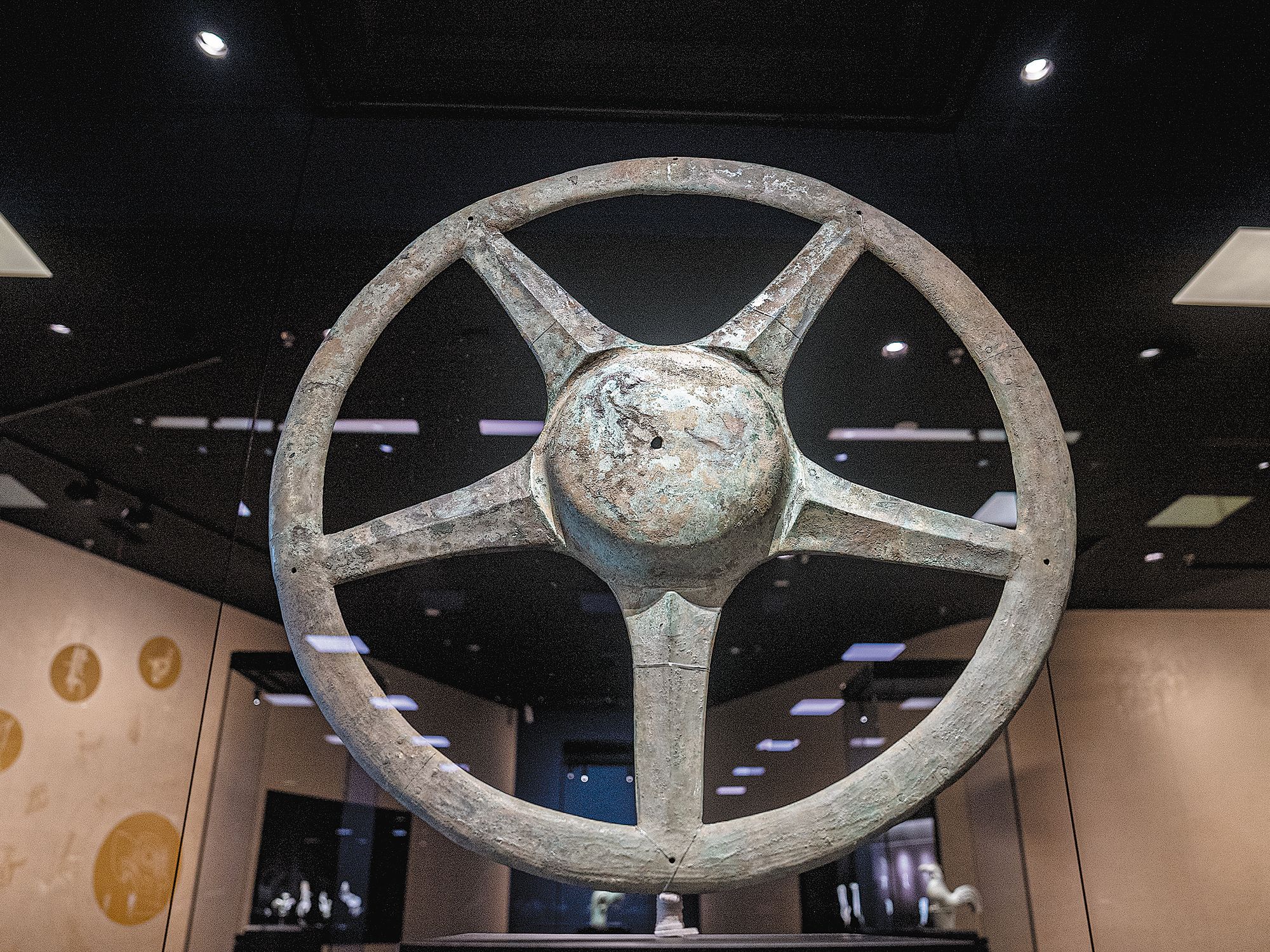- Asia
- China
- China Daily
THE ARTICLES ON THESE PAGES ARE PRODUCED BY CHINA DAILY, WHICH TAKES SOLE RESPONSIBILITY FOR THE CONTENTS
Advertisement feature Friday 21 November 2025 13:27 GMT
Friday 21 November 2025 13:27 GMT A gold mask unearthed at the Sanxingdui site, in Guanghan, Sichuan province (PROVIDED TO CHINA DAILY)
A gold mask unearthed at the Sanxingdui site, in Guanghan, Sichuan province (PROVIDED TO CHINA DAILY)Sanxingdui in Guanghan, Sichuan province, discovered in the 1920s, has yielded a wealth of discoveries over nearly a century of archaeological research.
Among its most remarkable findings are those from eight pits that have astonished the world with their exquisite artefacts and mysterious origins.
The first two pits, unearthed in 1986, revealed magnificent bronze and gold masks that captured global attention. A new round of excavations beginning in 2019 uncovered six additional pits, numbered 3 to 8, sparking even greater public curiosity about the site’s origins and chronology.
Recent research has provided more solid clues. According to new carbon-14 analysis conducted by Peking University, there is a 95.4 per cent probability that the burial of the sacrificial pits 3, 4, 6 and 8 occurred between 1201 BC and 1012 BC.
This places the period in the late Shang Dynasty (c.16th century-11th century BC), the Sichuan Provincial Cultural Relics and Archaeology Research Institute says.
 A bronze sun wheel found at the site (PROVIDED TO CHINA DAILY)
A bronze sun wheel found at the site (PROVIDED TO CHINA DAILY)Identical fragments found in pits 1, 2, 3, 4, 7, and 8 suggest that these artefacts were buried at the same time, says Ran Honglin, the institute’s lead archaeologist at Sanxingdui. This discovery provides key evidence for establishing a precise chronological framework for the site.
A joint study by the Sichuan provincial institute, the Palace Museum in Beijing, the University of Science and Technology Beijing and the Needham Research Institute at the University of Cambridge, England, has also offered new insights into Sanxingdui’s bronze-casting techniques.
According to the study, Sanxingdui developed an innovative casting technology centred on sectional casting, complemented by integral casting and forging, during the late Shang Dynasty.
In the production of bronzeware, the inner core, or the clay core, and the outer mold worked together to cast the shape of the vessel.
To reinforce and support the inner core during its production process, bronze workers added organic or metal strip-shaped materials, similar to steel bars used to reinforce concrete in modern architecture.
Bronze workers also used supports in the casting molds to maintain the relative position between the inner core and the outer mold, thereby avoiding misalignment and adhesion between the two components, says Guo Jianbo, a researcher at the Sichuan provincial institute.
The techniques effectively solved the challenges in molding slender and curved objects and were indispensable for casting objects such as the bronze divine tree, one of the most magnificent finds from Sanxingdui. These techniques indicate that people casting bronze in Sanxingdui were flexible and skilled artisans, Guo says.
Multidisciplinary research on five aspects of Sanxingdui, including the manufacturing techniques of excavated gold artefacts, bronze painting techniques, standardised pottery production, rice cultivation methods and ivory preservation technology, has also made significant progress, Guo’s institute says.
Researchers say the gold artefacts from Sanxingdui, all gold-silver alloys, were probably obtained from relatively stable placer gold deposits and refined through cupellation, an ancient method used to purify silver and gold.
Painted bronze artefacts from Sanxingdui, decorated with cinnabar and lacquer, are the earliest bronze-body lacquerware in China, the institute says.
Ivory objects have also been excavated from the site.
There is evidence that early Sanxingdui inhabitants practised intensive wetland rice farming, which supported a dense population and fueled the rapid rise of Sanxingdui, the institute says.
The Sanxingdui site, covering four-and-a half square miles, includes the remains of an ancient city, sacrificial pits, residential quarters and tombs.
Scholars believe the site was established 2,800 to 4,800 years ago, and archaeological discoveries confirm that it was a highly developed and prosperous political, economic and cultural centre of the Shu Kingdom, as recorded in many ancient Chinese documents. In ancient times Sichuan was known as Shu.



